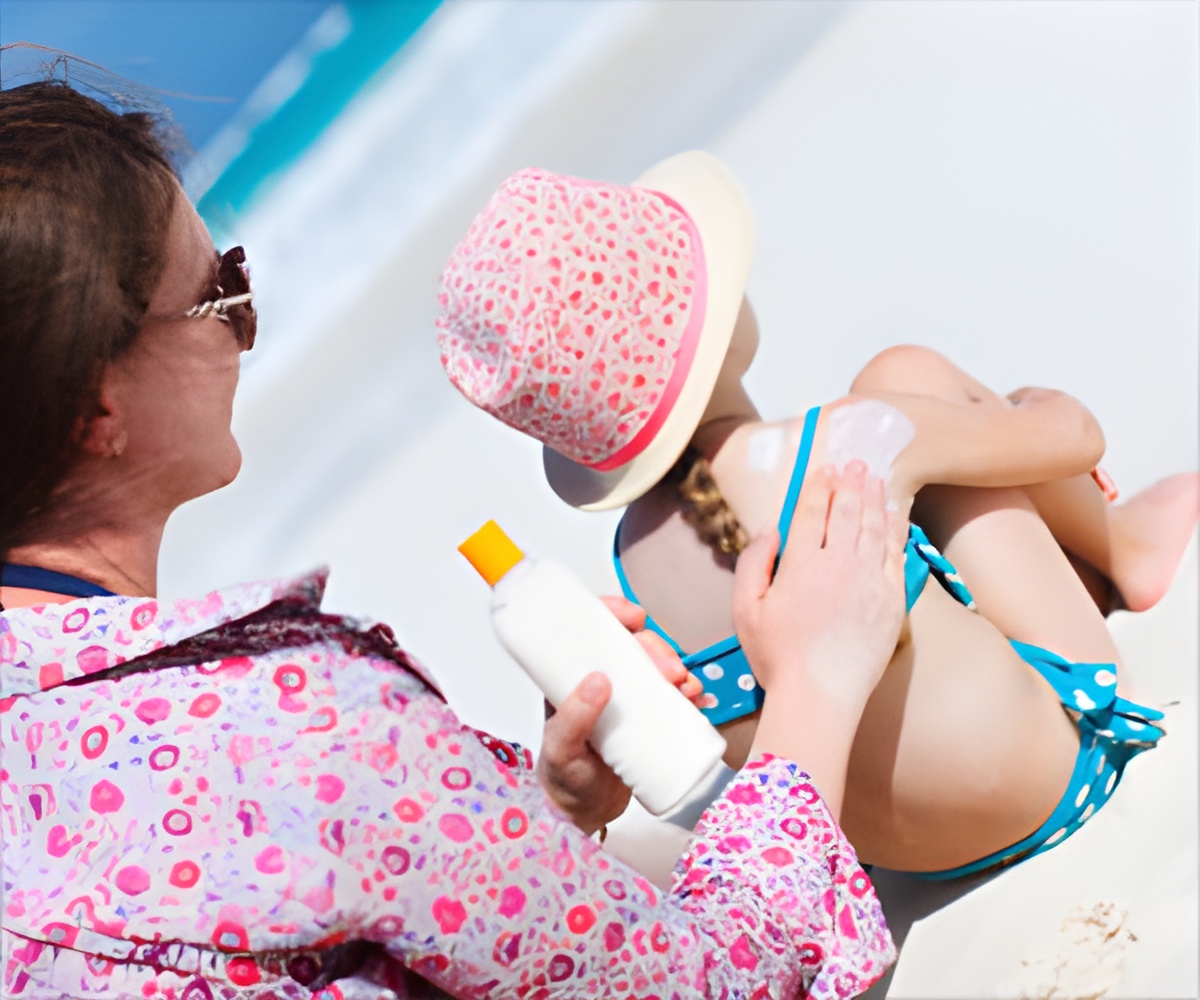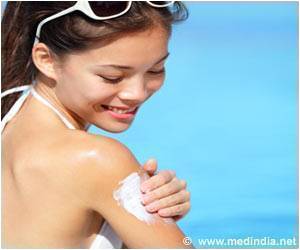Wearing the right clothing, applying sunscreen appropriately, and seeking shade during peak hours of UV radiation, can greatly reduce the risk of skin cancer.

UV rays react with a pigment called melanin that is found in skin. As the melanin increases in response to sun exposure, the skin begins to darken or tan.
Adults are slightly less vulnerable to the harmful rays of the sun than small children, as their skin is slightly thick and provides a little resistance to the UV radiation. Infants and toddlers are at greatest risk of unprotected sun exposure. The outermost layer of their skin is still thin and developing during the first two years of life. The fairer the child's skin, the greater is their susceptibility of sunburn. The American Academy of Pediatrics (AAP) has revealed that UV radiation can begin to damage skin during an infant’s very first summer, and therefore sun safety is important from birth.
Research suggests that just a few serious sunburns can increase a child’s risk of skin cancer later in life. Children do not necessarily have to be at the pool, beach, or on vacation to get too much sun exposure. Their delicate skin needs protection from the sun’s harmful UV rays whenever they are outdoors. Sunburn or sun tan indicates damage due to UV rays.
It has been recommended that infants under the age of six months receive no direct exposure to sunlight. Since their environment can be easily controlled at this age, they are best protected under cover. For mobile infants and small children the following methods of sun protection can be effective:
- Limit outdoor activities: The best
way to avoid sunburn is to avoid sun exposure. The intensity of the UV
rays is strongest and most harmful during midday (approximately 11 am to 4
pm). Therefore it is best to plan indoor activities around that time.
Practice the shadow rule- if your shadow is shorter than you, you should
stay indoors or find shade. If it is not possible to stay indoors, limit
exposure to the sun by seeking shade under a tree, an umbrella, canopy or
a pop-up tent.
It is also important to note that temperature is not associated with the strength of UV rays. The UV rays damage the skin, and not the temperature. The amount of radiation that children may be exposed to on a hot summer day could be the same as that on the coolest day. UV radiation can also penetrate through clouds, and so protection is still necessary on overcast days. Being near a bright surface such as sand, water or concrete area reflects UV radiation. This makes the intensity of UV exposure far greater, thus suggesting the need for extra precautions when in these environments. - Apply sunscreen: The
Centers for Disease Control (CDC) recommends that kids should use a
broad-spectrum and water-resistant sunscreen that will protect them from
both UVA and UVB radiation and will also endure water activities.
Use sunscreen with sun protection factor (SPF) of at least 15. The American Academy of Dermatology (AAD) recommends that all children regardless of their skin tone should use sunscreen with an SPF of 30 or higher. Sunscreen with SPF 30 provides almost as equal protection as a sunscreen with an SPF of greater than 30.
Apply the sunscreen liberally on the face, ears, noses, hands, and the tops of feet at least 30 minutes before stepping out in the sun. Protect the lips with a SPF 30 lip balm. It is important to re-apply the sunscreen every two to three hours during the day, especially after swimming and excessive sweating. - Wear sun protective clothing: Wearing long-sleeved shirts, long pants and skirts can provide protection from UV rays. Cotton and linen are the best fabrics for staying cool in summers. Tightly woven, dark colored, dry clothing provides better UV protection than loosely woven, light colored or wet clothing. Lately, some international brands offer clothing with ultraviolet protection factor.
- Wear sunglasses: Always try to get children to wear sunglasses that can block both UVA and UVB rays. Sunglasses protect the eyes from UV rays, which can lead to cataracts later in life.
- Wear a hat: Encourage children to wear hats with a wide brim that shade the face, scalp, ears, eyes, and neck. Though baseball caps are popular among children, they do not protect the ears and neck, and so it is important to ensure that the exposed areas are protected with a sunscreen.
References:
1. http://www.cdc.gov/cancer/skin/basic_info/children.htm/sun-protecting-your-childs-skin.aspx
3. http://kidshealth.org/parent/firstaid_safe/outdoor/sun_safety.html#
Source-Medindia
 MEDINDIA
MEDINDIA




 Email
Email










